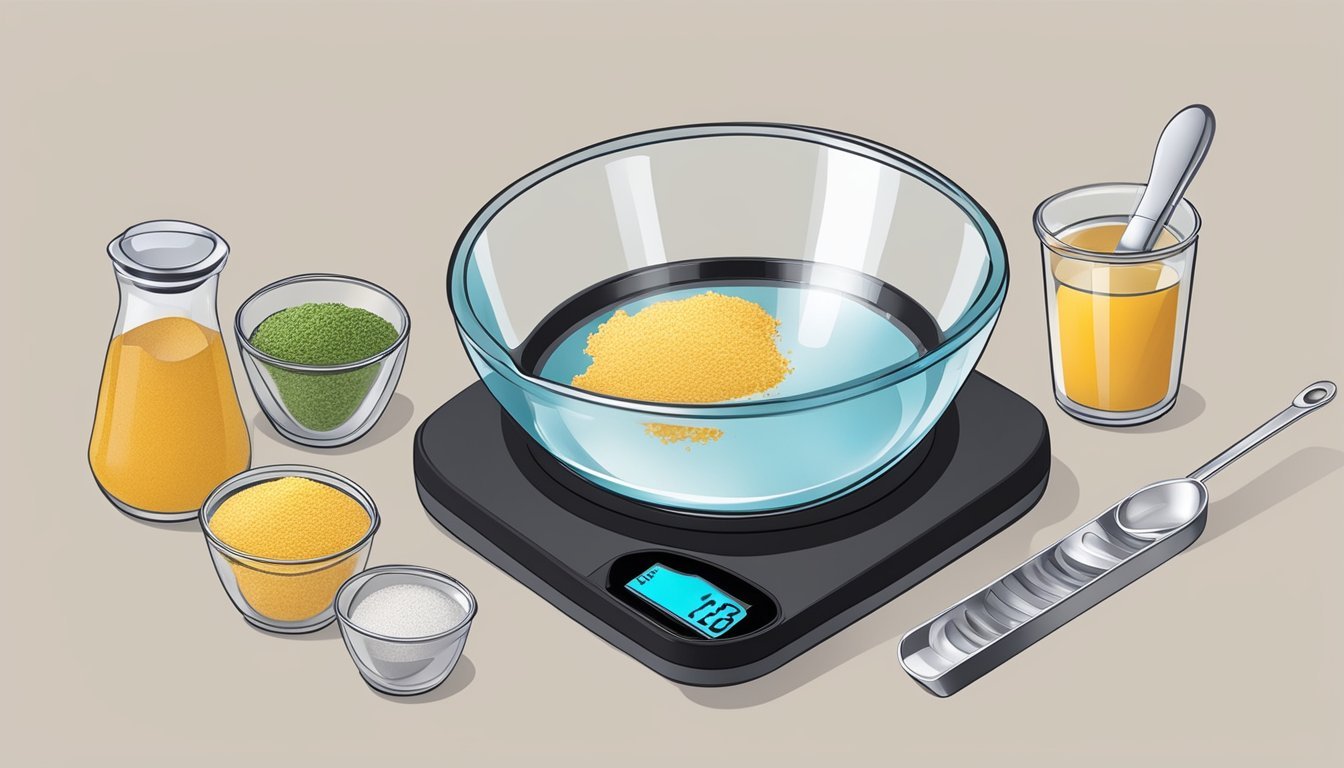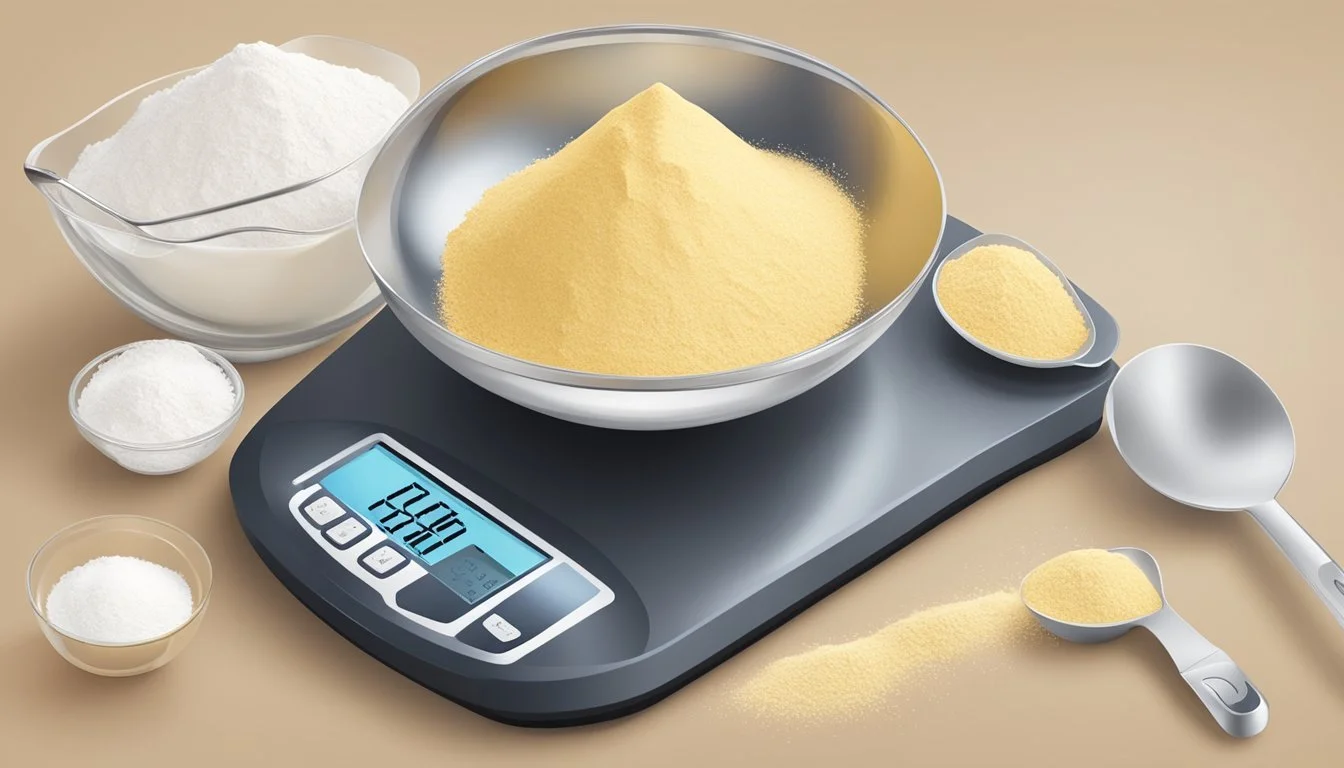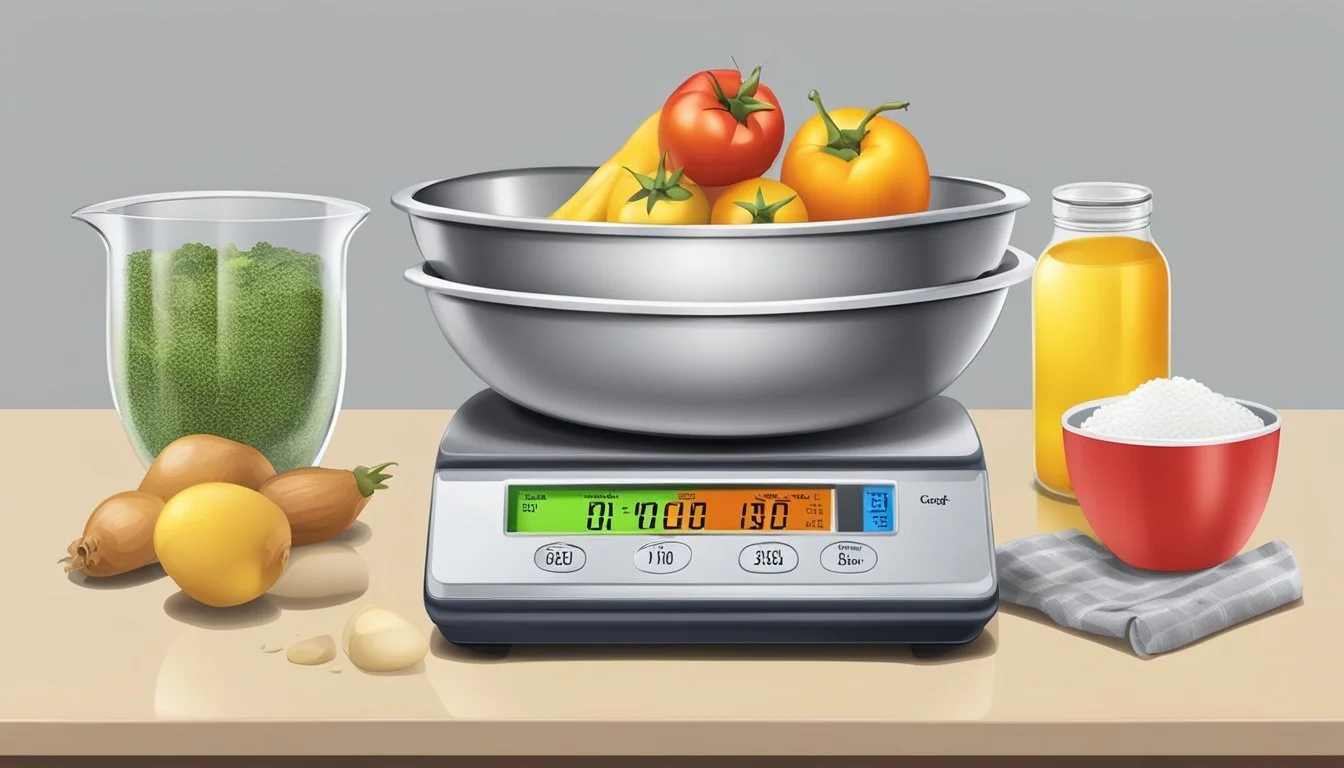How to Measure Ingredients for a Recipe in Grams
A Precision Guide
Measuring ingredients by weight in grams allows for precision and consistency in cooking and baking. When ingredients are measured by volume, the quantity can vary significantly due to factors such as how tightly an ingredient is packed into a measuring cup or the size of a tablespoon. However, when a recipe specifies weights in grams, it eliminates the guesswork and potential for error. Most professional kitchens and an increasing number of home cooks are adopting this method to ensure their recipes turn out perfectly every time.
Converting recipes from volume to weight can seem daunting at first, but it is straightforward once one understands the basic conversions. Sugar, flour, butter, and other common ingredients can be accurately measured using a digital kitchen scale, which shows the precise weight of the ingredients. Converting ingredients from cups to grams involves using standard conversion charts, as every ingredient has a different density and therefore a different conversion ratio.
It's important to note that weighing ingredients is not only about accuracy but also about the quality of the end product. A cake with carefully measured flour will have the intended texture, and bread with the correct proportion of ingredients will rise as expected. Using grams as a unit of measurement removes the variables and gives home cooks the confidence that their efforts in the kitchen will be reflected in their culinary creations.
Understanding Measurement Systems
When preparing a recipe, precise measurement is crucial for consistent results. Understanding the difference between measurement systems and how to convert between them is a foundational skill for any cook adapting recipes from various cuisines.
Metric vs. Imperial Systems
The Metric system is an international decimal-based system of measurement, commonly used around the world and in scientific communities. It measures weight in grams (g) and volume in liters (L) or milliliters (ml). On the other hand, the Imperial system is used primarily in the United States and measures weight in pounds (lb) and ounces (oz), and volume in gallons, quarts, pints, cups, and fluid ounces (fl oz).
Converting Ounces to Grams
Converting from the Imperial system to the Metric system involves a specific numeric factor. One ounce equates to approximately 28.35 grams. When a recipe calls for an ingredient in ounces and a cook needs the equivalent in grams, they multiply the number of ounces by 28.35 to obtain the weight in grams.
Ounces Grams 1 oz 28.35 g 2 oz 56.7 g 3 oz 85.05 g 4 oz 113.4 g
Converting Volume to Weight
Volume measurements are often used for liquids, while weight measurements are preferred for dry ingredients. To convert volume to weight, a cook must consider the density of the ingredient because volume measures the space an ingredient occupies, while weight measures the mass. For common conversions such as cups to grams or milliliters to grams, specific charts and calculators are available that take into account the density of different ingredients.
For instance:
1 cup of water (approx. 237 ml) weighs about 237 grams.
However, for other ingredients like flour or sugar, 1 cup does not equate directly to 237 grams because of the different densities. A standard conversion could be around 120 grams for flour and 200 grams for sugar per cup.
It is essential to use appropriate conversion tools or tables that provide the correct weight for each ingredient by volume to ensure accuracy in baking and cooking.
Choosing the Right Measuring Tools
Precision in measuring ingredients is central to successful baking and cooking, especially when converting recipes to grams. To achieve this, one needs reliable measuring tools tailored for different types of ingredients.
Types of Kitchen Scales
A kitchen scale is indispensable for measuring ingredients in grams. Two primary types are:
Digital Scales: Known for accuracy, these provide instant readings and often feature a tare function, allowing for the container's weight to be subtracted.
Mechanical Scales: Operated manually, these scales can be less precise but add a classic touch to the kitchen.
One should look for a scale with at least 1-gram increments for accuracy.
Dry vs. Liquid Measuring Cups
Measuring cups come in two varieties for proper measurement:
Dry Measuring Cups: Designed to measure dry ingredients, these cups are meant to be filled and leveled off with a straight edge. They typically come in set sizes of 1 cup, 1/2 cup, 1/3 cup, and 1/4 cup.
Liquid Measuring Cups: Made to measure liquids, they usually have a spout for pouring and measurement lines for accuracy. They allow the liquid to reach the desired measurement mark without spilling.
One should refrain from using dry cups for liquids and vice versa, as this can lead to inaccurate measurements.
Measuring Spoons for Small Quantities
For smaller measurements, a set of measuring spoons ranging from a tablespoon down to 1/4 or 1/8 teaspoon is necessary. These are ideal for both dry and liquid ingredients that require precision, such as baking powder, yeast, or flavor extracts.
When using measuring spoons, one should fill the spoon and then level it off to get an accurate measure.
Measuring Common Baking Ingredients
Precision is paramount when measuring baking ingredients to achieve consistent and successful results. This section guides on measuring common baking ingredients in grams to ensure accuracy.
Measuring Different Types of Flour
Flour forms the foundation of many baked goods and its proper measurement is crucial. A digital scale is highly recommended for this purpose. When measuring all-purpose flour, lightly spoon it into a measuring cup and level it off before weighing; it typically weighs about 125 grams per cup. Bread flour and cake flour also have different densities, with bread flour being slightly heavier at around 127 grams per cup, and cake flour lighter at approximately 120 grams per cup.
Measuring Various Sugars
Sugar variety can influence not only the sweetness but also the texture and moisture of baked goods. Granulated sugar should be weighed at 200 grams per cup. Powdered sugar, due to its airy structure, weighs in at 120 grams per cup when sifted. For brown sugar, which should be packed into the measuring cup before weighing, the weight is roughly 220 grams per cup.
Measuring Butter and Fats
Butter and fats add richness to recipes and should be measured accurately. Solid butter can be sliced into pieces and placed on a scale till it hits the right weight — 227 grams for a cup. If one has to measure a smaller amount, remember that each tablespoon of butter weighs about 14 grams. For oils and melted fats, use a liquid measuring cup to pour the fat into until it reaches the weight necessary, such as 218 grams for a cup of vegetable oil.
Ensuring Measurement Accuracy
When baking, precise measurements are critical to the success of a recipe. They ensure that each ingredient's role, whether it provides structure, flavor, or leavening, is fulfilled to perfection. Grams are the most accurate unit of measurement for small quantities of dry and wet ingredients, providing the consistency that volume measurements cannot guarantee.
Key Tips for Accurate Measurements:
Use a digital scale: This tool is essential for measuring ingredients in grams. It allows for precise measurements, which is particularly important for baking, where even small deviations can alter the outcome.
Tare your scale: Before adding ingredients, always set the scale back to zero. This accounts for the weight of the bowl or container and gives you an accurate measurement of the ingredient itself.
Measure Ingredients Individually: To maintain accuracy, measure each component one at a time rather than trying to measure several items in the same bowl.
Tricks for Specific Ingredients:
Flour: Spoon flour into the measuring cup and level it off with a knife. Do not pack flour down, as it will lead to an over-measurement.
Liquids: For water, oil, and other liquids, pour into a measuring cup and check at eye level for an accurate reading.
Incorporating these tips and tricks will ensure precision and therefore, success in your baking endeavors. Accuracy in measurement maintains the balance of ingredients, which in baking, is the cornerstone of creating quality products that taste as intended by the recipe. Always remember, baking is as much a science as it is an art, and precision is the key to mastering it.
Conversion Charts and Calculators
Conversion charts and calculators are essential tools for bakers and cooks who need to convert recipe measurements into grams. The understanding of different measurement systems—like U.S. customary units and the metric system—is crucial to achieve accurate conversions.
Conversion charts usually list a range of measurements for common baking ingredients from cups to grams. They encompass a variety of ingredients such as sugar, flour, and fats, each with unique densities. For liquids, charts will often convert fluid ounces to milliliters and grams, facilitating precision in liquid ingredients.
For example, baking conversions might include:
1 cup all-purpose flour = 125 grams
1 cup granulated sugar = 200 grams
1 cup butter = 227 grams
When using metric weight scales, bakers often need to convert ounces to grams, where 1 ounce equals approximately 28.35 grams. Measurements in kilograms and pounds might also be relevant for larger batch recipes, with 1 kilogram being equivalent to 2.20462 pounds.
Moreover, online baking ingredient conversion calculators serve as a dynamic tool where users input the quantity and the ingredient to obtain the corresponding weight in grams. These calculators consider the specific density of ingredients, which is essential since a cup of feathers is not equal in weight to a cup of lead.
An essential reminder for bakers is that converting between units of volume and weight requires an understanding of the ingredient's density. Therefore, a flour cup-to-grams conversion will differ in weight from a sugar cup-to-grams conversion due to density differences.
To summarize, chefs should utilize conversion charts and calculators to ensure their recipes are accurate when measured in grams. Consistency and precision are the results of effectively using these tools, laying the groundwork for successful baking endeavors.
Practical Tips for Measuring Ingredients
When measuring ingredients, accuracy is key to achieving the desired outcome of a recipe. Grams are a metric unit of weight, and using a digital scale can ensure precision. Place a bowl on the scale, zero it out, and then add the ingredient until the correct weight is displayed. This method helps to measure both dry and wet ingredients effectively.
Dry ingredients should be measured using the 'spoon and level' technique. One should spoon the ingredient into the measuring cup until it overflows slightly, and then level it off with the back of a knife. For ingredients that can become compacted, like brown sugar, they need to be packed into the cup until they take the shape of the cup's interior.
When dealing with wet ingredients, using a measuring cup with a spout ensures an accurate pour. The cup should be placed on a flat surface, and the user should bend down to check the measurement at eye level.
Here is a quick reference table for common baking ingredients:
Ingredient Grams to Cups (Approx.) All-purpose flour 120g = 1 cup Granulated sugar 200g = 1 cup Butter 227g = 1 cup
For smaller quantities, remember that a teaspoon holds about 5 grams of a dry ingredient and a tablespoon around 15 grams.
Lastly, always be aware of the ingredient temperature. Ingredients like butter may weigh differently when melted versus when it's solid. A calibrated scale is the cook's best tool for consistency and accuracy in their culinary creations.
Temperature Considerations in Baking
When baking, one must be acutely aware of the role temperature plays in the process. Recipes may specify temperatures in either Celsius or Fahrenheit, so it is crucial to use the correct scale. Ovens vary, and the actual temperature inside can differ from what is set. Hence, an oven thermometer is a baker's ally, ensuring accuracy no matter the unit of measurement.
Oven Preheating
Preheating the oven is fundamental. It ensures that baked goods start at the correct temperature, facilitating even cooking and desired texture. Avoid placing items in the oven before it reaches the specified temperature.
Ingredient Temperature
The temperature of the ingredients can significantly affect the outcome. For instance, room-temperature eggs and butter integrate better, creating a smoother batter. Chilled butter, on the other hand, is key for flakier pastries.
Altitude Adjustment
High-altitude baking may require temperature adjustments. Air pressure decreases with altitude, which can lead to faster cooking times. It may be necessary to increase the oven temperature slightly to compensate.
Conversion Chart
When converting temperatures, use a reliable chart to switch between Celsius and Fahrenheit.
Fahrenheit (°F) Celsius (°C) 325 165 350 177 375 190 400 204 425 218
These numbers round to the nearest whole number for simplicity.
Temperature monitoring and adjustments are paramount for successful baking outcomes. By attending to these details, they ensure that recipes yield the intended results, regardless of external factors like oven calibration and altitude.




